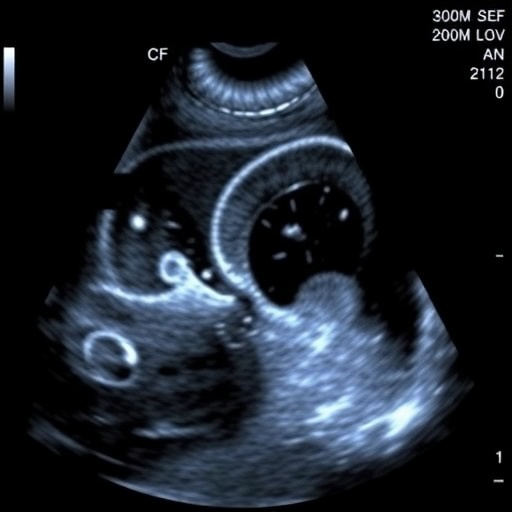In the intricate landscape of breast cancer screening, recent research has spotlighted a pivotal challenge: optimizing detection among women with dense breast tissue. This emerging focus underscores the limitations of conventional mammography and the potential of integrating supplemental ultrasound to enhance diagnostic accuracy. A newly published qualitative study, led by Elsner and colleagues, delves deeply into the practicalities, perceptions, and systemic hurdles of implementing additional ultrasound screening within national mammography programs.
Breast cancer remains one of the most pressing health concerns globally, and mammography has long served as the frontline tool for early detection. However, the diagnostic sensitivity of mammography significantly diminishes in women with dense breast tissue, a condition characterized by a higher proportion of fibroglandular tissue compared to fatty tissue. Dense breast tissue not only elevates breast cancer risk but also obscures malignancies on mammograms, akin to watching shadows blend in dim light.
To address this diagnostic blind spot, supplemental ultrasound has been proposed as a complementary tool alongside mammography. Ultrasonography offers the advantage of differentiating dense tissue textures and detecting lesions that mammograms may miss. Despite its theoretical benefits, the incorporation of additional ultrasound into national public screening programs remains fraught with uncertainty regarding its feasibility and acceptance among both healthcare providers and screening clients.
The study by Elsner and associates adopts a prospective, controlled mixed-methods design, focusing on qualitative insights drawn from 31 semi-structured telephone interviews. Participants included a balanced mix of healthcare providers deeply embedded in screening programs and women identified as having dense breast tissue, all from six mammography screening centers in Germany as part of the DIMASOS2 trial. This unique methodology provided a rich narrative landscape, illuminating the lived experiences and professional perspectives surrounding breast density and screening modalities.
Revealingly, many women expressed gratitude for the opportunity to receive supplemental ultrasound testing alongside routine mammograms. Interestingly, approximately half of these participants were already aware of their dense breast tissue status, a testament to increasing public health communications. Yet, a substantial knowledge gap persisted regarding the implications of dense tissue for the efficacy of mammographic screening, highlighting a critical need for improved patient education and counseling.
Healthcare professionals acknowledged the imperative to elevate the sensitivity of breast cancer screening for women with dense tissue. However, their enthusiasm was tempered by multifaceted challenges, including insufficient evidence from large-scale trials to endorse adjunct ultrasound unreservedly. Concerns about overdiagnosis—detecting abnormalities that may not progress to malignancy—loom large, alongside the risk of false positives causing unnecessary anxiety and interventions.
Moreover, substantial organizational barriers emerged as formidable obstacles. The integration of additional ultrasound examinations necessitates significant resource allocation, staff training, scheduling adaptations, and infrastructure enhancements within already burdened mammography screening centers. These systemic complexities complicate straightforward adoption despite clinical need, painting a sobering picture of the operational realities in public health settings.
The study’s findings underscore a disturbing gap in open discussions about breast density between patients and healthcare providers. This silence perpetuates ambiguity and limits informed decision-making, a cornerstone of patient-centered care. The absence of evidence-based informational resources compounds this issue, leaving both providers and clients navigating a grey zone of uncertainty regarding best practices and personal risk.
From a policy perspective, these insights reveal that optimizing breast cancer screening necessitates more than technological upgrades; it demands systemic reforms, improved communication strategies, and comprehensive educational frameworks. Policymakers and health system leaders face the daunting task of balancing the benefits of enhanced sensitivity with the risks of overdiagnosis and logistical constraints.
Elsner et al.’s qualitative approach shines a unique light on the human dimension underlying these technical challenges. By capturing nuanced perspectives from multiple stakeholders, the study unveils the emotional and cognitive contours shaping screening experiences. Women’s appreciation for supplemental ultrasound reflects a deep desire for reassurance and proactive health management, while health professionals’ cautious stance highlights their ethical commitment to evidence-based practice.
In terms of future directions, the research helps chart a roadmap for addressing current gaps. Rigorous clinical trials are needed to quantify the benefits and harms of adjunct ultrasound definitively, providing a firmer evidence base to guide screening policies. Concurrently, educational campaigns must empower women with dense breast tissue through transparent information about risks, screening options, and possible outcomes.
Furthermore, technological innovations, such as artificial intelligence-assisted imaging and tailored risk stratification models, hold promise to refine screening paradigms. These tools may one day mitigate current limitations by optimizing personalized screening schedules and imaging modalities based on individual tissue composition and cancer risk profiles.
The integration of additional ultrasound screening is emblematic of a broader paradigm shift toward personalized medicine in oncology. As understanding deepens regarding biological heterogeneity and patient-specific factors, screening programs must evolve from one-size-fits-all approaches to more nuanced, adaptable frameworks. The challenges identified by this study reflect growing pains in this transformative journey.
Ultimately, this research highlights a pressing ethical imperative: to bridge the divide between scientific advancement and practical implementation, ensuring equitable access to optimal screening for all women. By revealing the intertwined complexities of knowledge gaps, organizational barriers, and emotional landscapes, Elsner and collaborators contribute invaluable insights that can catalyze progress toward more effective, patient-centered breast cancer detection strategies.
The implications extend beyond Germany’s borders, resonating with global efforts to improve cancer screening outcomes. Health systems worldwide grapple with similar dilemmas, making these findings broadly relevant to international oncology and public health communities. Collaborative, multidisciplinary approaches will be essential to translate these lessons into actionable solutions.
In conclusion, optimizing breast cancer screening for women with dense breast tissue is a multifaceted challenge demanding coordinated advances in clinical evidence, technological integration, health communication, and system organization. Supplementing mammography with ultrasound holds promise but also presents intricate barriers that must be carefully navigated. This pioneering qualitative study lays a crucial foundation for informed dialogue and strategic innovation to enhance early cancer detection and ultimately save lives.
Subject of Research:
Optimizing breast cancer screening through the integration of supplemental ultrasound for women with dense breast tissue in national mammography programs.
Article Title:
Optimising breast cancer screening in national mammography screening centres: challenges and insights on implementing additional ultrasound for women with dense breast tissue — a qualitative study.
Article References:
Elsner, S.A., Haußmann, E., Grieger, P. et al. Optimising breast cancer screening in national mammography screening centres: challenges and insights on implementing additional ultrasound for women with dense breast tissue — a qualitative study. BMC Cancer 25, 1684 (2025). https://doi.org/10.1186/s12885-025-15145-1
Image Credits: Scienmag.com
DOI: https://doi.org/10.1186/s12885-025-15145-1
Tags: breast cancer screening improvementDense breast tissue challengesdiagnostic accuracy in breast cancerenhancing early detection of breast cancerimplementation of ultrasound screeningmammography limitationsnational mammography programsovercoming barriers in breast cancer diagnosticsperceptions of breast cancer screeningsupplemental ultrasound benefitsultrasound in breast cancer diagnosiswomen’s health and breast cancer





